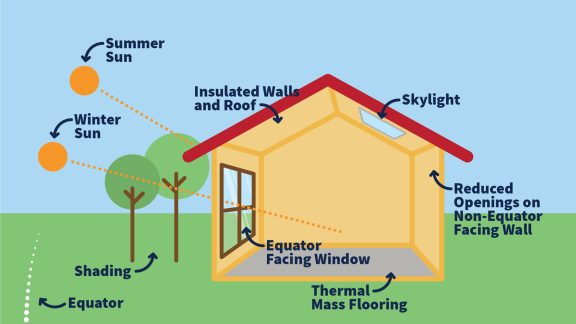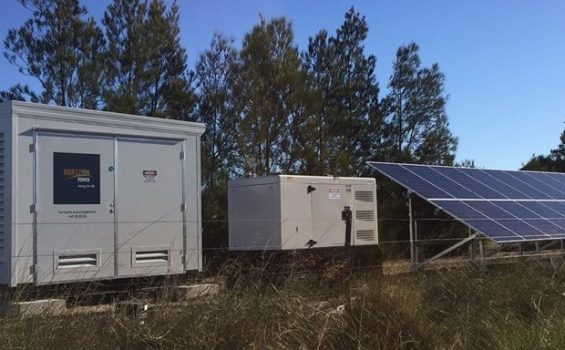
Effective house design for passive heating and cooling
4 May 2023
Passive design involves designing a home or building so that it retains the heat inside during the winter (called passive solar heating) and allows any internal heat to escape during the summer (called passive cooling). This maintains the home within a comfortable temperature range all-year round.
The design achieves this by efficiently capturing the sun’s energy through large North-facing windows (in the Southern hemisphere) during the winter. This solar energy is stored in the thermal mass of floors and walls, and during the evening is passively released to warm a room. Combined with other elements, such as good insulation of both ceilings and walls, correctly designed extended eaves, and suitably sized windows, the need for extra heating in the colder months is greatly reduced.
To take advantage of this solar gain (i.e. the increase in thermal energy of a space, object or structure as it absorbs incidental solar radiation) requires the surrounding buildings, or structures and plantings, to not overshadow the north-facing windows.
Passive cooling allows any indoor heat to escape during the summer months through the effective placing of windows, doors, and breezeways to capture cooling air flows in the night. In the south-west of Western Australia, the breeze usually comes from the south-westerly winds known as the Fremantle Doctor. Additional shading from sail cloths, retractable blinds, solar louvres, and trees and plants can aid effective house cooling during hot summer days.
Curtains and pelmets add to overall energy efficiency by keeping heat out during the day in summer and keeping heat in during the night in winter. This means passive solar design requires active participation by the home’s occupants. If the curtains and windows aren’t opened and closed appropriately, you lose the benefits of the design.
Passive design is even more effective in reducing energy use as part of a sustainable way of life when combined with features such as solar panels or a clustered solar microgrid, and battery storage.
A home designed for passive heating and cooling makes the best use of natural elements like orientation, sun, shading, and air flow to help maintain a living or working space within a suitable temperature range. It lowers energy use when heating or cooling a home, and the associated costs and carbon emissions.
Sources
1 Your Home- Australian Government: https://www.yourhome.gov.au/energy/heating-and-cooling


Discussion